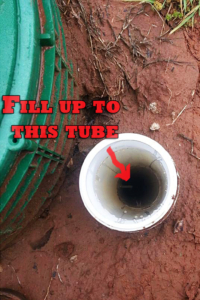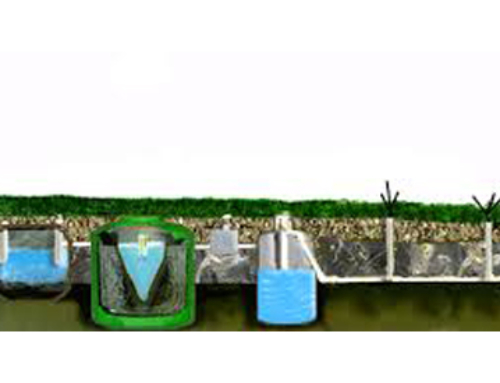Tablet Chlorinators? Liquid Bleach Chlorinators? Which chlorinator is the best choice for me and my system? Hopefully, this will article will help you to determine if you would like to make a change.
Tablet Chlorinators

A tablet chlorinator usually consists of a basin where the tubes containing a stack of chlorine tablets are placed. The top of the tubes should extend above the ground surface and be protected by a cap. The bottom tablet in the tube is in contact with the wastewater flowing through the basin. As that tablet dissolves and/or erodes, the tablet above falls by gravity to replace it.
A tablet can dissolve quickly or slowly, depending on the volume and flow of wastewater coming into contact with it, the properties of the tablet, and the length of contact time. A balance must be struck regarding the contact time in the chlorinator basin. If the contact time is too long, the wastewater becomes over-chlorinated and the tablets are consumed rapidly; if the contact time is too short, the wastewater is not disinfected sufficiently.
Use only chlorine tablets that are approved for use in wastewater. They are made of calcium hypochlorite (Ca(OCl)2). These tablets dissolve in the wastewater and release the hypochlorite which then becomes hypochlorous acid, the primary disinfectant.
When adding a calcium hypochlorite tablet, add no more than three at a time and DO NOT fill up the chlorinator. It will cause a huge mess, possibly restrict flow thru the system and waste expensive chlorine.
According to the EPA spokesman, use of swimming pool chlorine products in the treatment of wastewater effluent is a violation of Federal Insecticide, Fungicide, and Rodenticide Act Sections 136a-2g and 136j(a)2g. The FIFRA regulations essentially state anyone who is using a chlorine product for applications other than those stated on the product’s labeling is potentially subject to a fine and/or imprisonment.
…But, it is okay to swim in water utilizing pool type chlorine!? Hmmmm?
Liquid Bleach Chlorinators

Liquid chlorinators typically use liquid chlorine bleach that is dosed into the wastewater prior to distribution.
These systems generally use an aspirator to draw chlorine from a reservoir. The chlorine is discharged into the pump tank to react with the wastewater. The aspirator requires that the pump be operating to develop the vacuum to draw a chlorine dose into the pump tank.
Factors affecting the performance of liquid chlorine disinfection include: mixing, contact time, dosage, and chlorine residual control. With proper system calibration, monitoring, and operation and maintenance, liquid chlorination can be a very effective means of disinfection for onsite wastewater treatment systems.
Most systems can be retrofit with a liquid bleach chlorinator. Liquid bleach is significantly cheaper than tablet chlorine.





